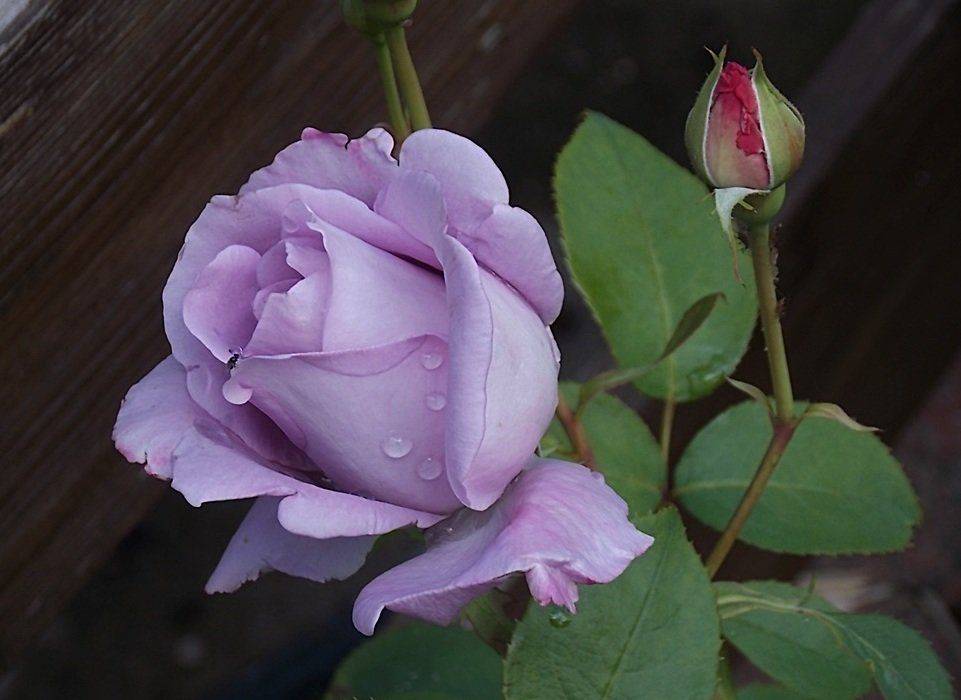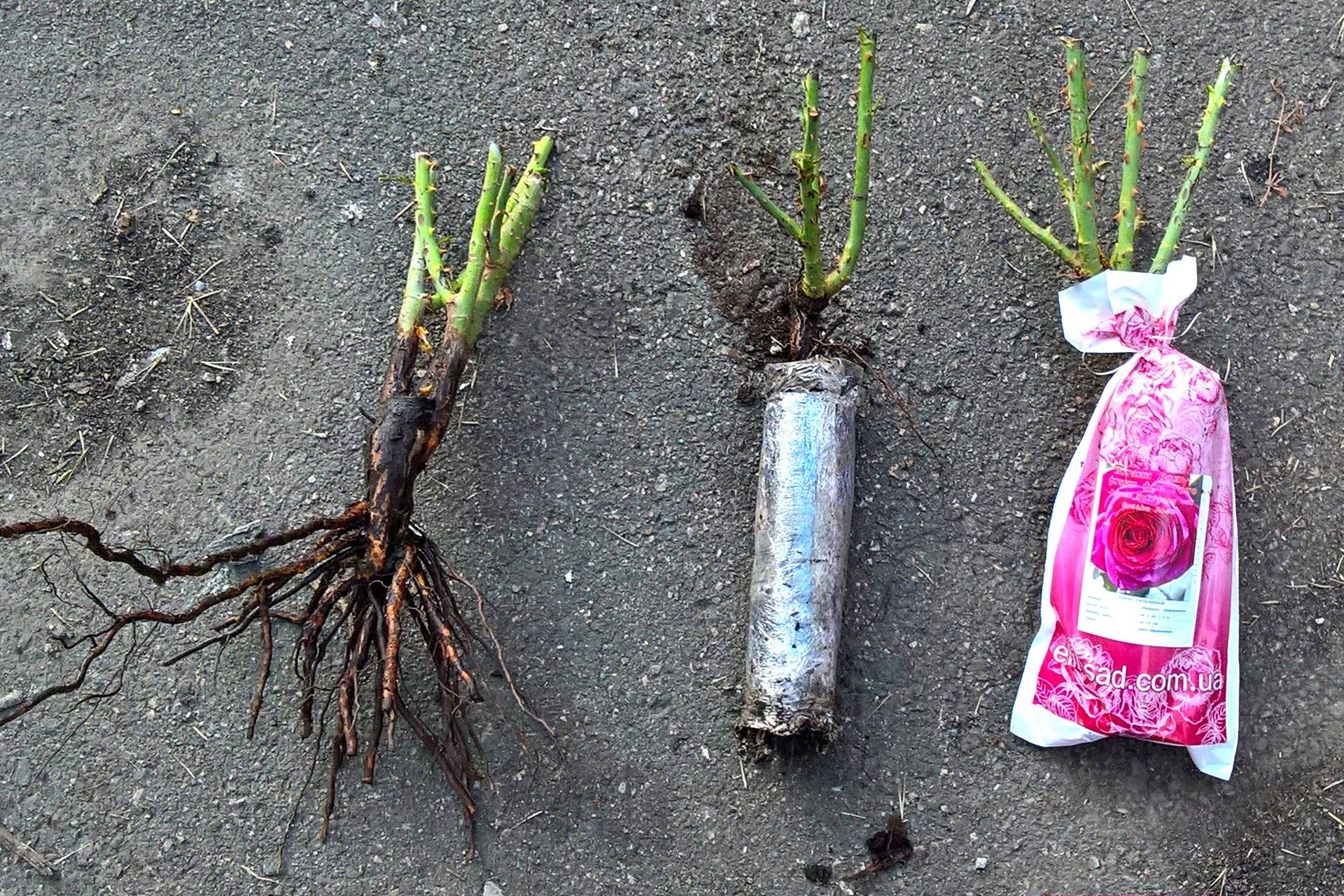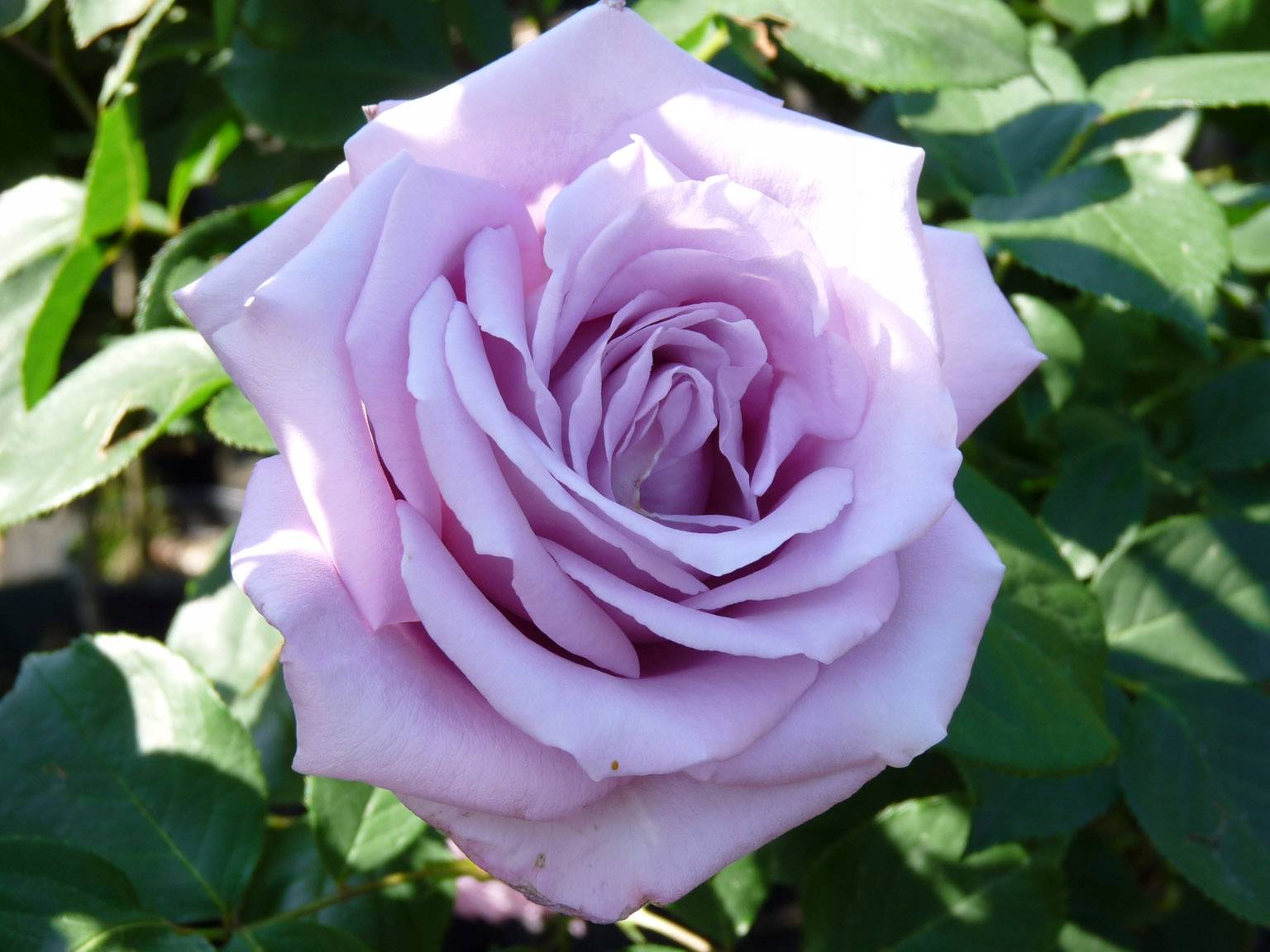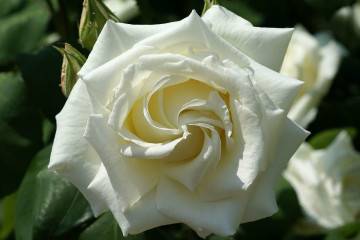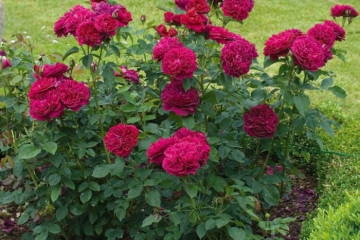Rose Mainzer Fastnacht - variety description
Content:
Repaired varieties of roses are very popular among flower lovers. They are prized for their ability to form flower buds throughout most of the summer and even fall. Below is information about the cultivation of the Mainzer Fastnacht remontant rose.
What is this grade
Rose Maiser was bred by specialists from Germany and Poland in 1964. It belongs to hybrid tea varieties. Abundant flowering, with short interruptions, lasts until frost.
Description and characteristics
The shoots of the rose reach a height of 110 cm. The bush spreads out to a width of 60-80 cm. There are sparsely located thorns on the stems.
The description indicates that the flowers are painted with a lilac palette. They consist of 30-40 double petals. The buds open slowly, changing shape from conical to goblet. In full dissolution, the diameter of the flowers reaches 10 cm.
The variety is unpretentious, tolerates cold winters well. Medium resistant to diseases.
Advantages and disadvantages
The positive qualities of the variety include the following characteristics:
- beautiful appearance;
- pleasant aroma;
- unpretentious care;
- frost resistance;
- the possibility of using flower shoots for cutting.
The disadvantages include an average resistance to disease, poor resistance to moisture.
Use in landscape design
Rose Mainzer Fastnacht is used primarily for planting as a tapeworm. Due to the unusual color of the buds, it is difficult to combine with other plants. Next to crops that have a bright color, the Sisi rose (the second name of the rose) will look invisible. It will look good against the background of medium-sized conifers.
Growing
Rose seedlings are purchased in a garden center from trusted sellers or in a plant nursery. Choose bushes that have 2-3 shoots, a developed root system.
In what form is the landing
For planting in the ground, seedlings with an open or closed root system are purchased. The second option is preferable, since in this case the bushes take root faster.
Roses are planted in the spring after the onset of steady heat. It is also allowed to plant a crop in the fall long before the onset of frost. In this case, the bushes are carefully covered for the winter.
Seat selection
Rosa Fastnacht is planted in a well-lit place, but shaded on a hot afternoon. This is necessary because the delicate buds fade from the scorching rays of the sun. Groundwater at the landing site must be deep.
How to prepare a flower and soil for planting
Shoots and root system are lightly pruned. The stems should not have flowers and leaves. The roots are dipped for 2-3 hours in a solution of a growth stimulator.
The site is freed from plant waste, dug up.Roses prefer to grow in fertile soil, so humus and compost are added to it.
Planting procedure step by step
The bushes are planted as follows:
- Dig holes 50 × 50 × 50 cm in size.
- A layer of sand and small stones is laid out on the bottom.
- Fertile soil is poured.
- The seedlings are placed in the middle, covered with a substrate, without deepening the root collar.
- Water abundantly.
To preserve moisture, the root circle is mulched with peat, tree bark.
Plant care
Caring for roses consists in watering, feeding, loosening the soil. The stems, broken by gusts of wind, are cut off the faded buds.
Watering rules and humidity
Water the bushes after the top layer of the soil has dried. Irrigation should be rare, but abundant. 15-20 liters of water are poured under an adult plant.
Top dressing and soil quality
In early spring, the rose is fed with nitrogen. During the budding period, potassium-phosphorus fertilizers are applied. The same composition is added after the first wave of flowering. In autumn, potassium is used, which helps to increase the immunity of plants.
Pruning and replanting
Sanitary pruning is performed in autumn and early spring. Cut dry, broken, diseased branches. After the first wave of flowering, the shoots are cut off so that the lateral buds wake up. Young branches quickly grow from them, on which flowers are formed.
Features of wintering a flower
Hybrid tea rose Xi si tolerates wintering well. Only those bushes that are planted in the current season need careful shelter. Adult plants are watered abundantly in mid-autumn. With the onset of cold weather, the root circle is mulched with peat, compost.
Blooming rose
On the shoots of the rose, single flowers of a lilac-purple color are formed.
A period of activity and rest
On a remontant rose, buds bloom from early summer to late autumn. In the middle of the season, there is a short break, the bushes are gaining strength for the second wave of flowering.
Care during and after flowering
During the period of bud formation, the bushes are abundantly watered, fed. The faded buds together with the stems are cut off. This promotes the growth of new flower shoots. After the second wave of fruiting, the bushes are fed with potassium.
What to do if it does not bloom
If the Mainzer Fastnacht rose is not blooming, it may be infested with diseases or pests. To prevent the appearance of misfortunes, the bushes are sprayed with insecticides and fungicides several times per season.
Reproduction
The culture can be propagated on the site by cuttings, layering, dividing the bush.
Most often, gardeners start propagating roses in late spring. By this time, the shoots are filled with juice, become susceptible to various procedures with them.
For cuttings, shoots are cut with a length of 10-15 cm. They are first placed in water for rooting or immediately planted in the ground. To create greenhouse conditions, the cuttings are covered with foil. Young bushes will soon develop from them.
For reproduction by layering, perform the following actions:
- Dig out shallow grooves;
- Shoots are laid in them.
- Pinned.
- Cover with earth.
- Water abundantly.
New plants will soon begin to form from the cuttings.
Diseases, pests, ways to combat them
With improper care, roses can be affected by fungal diseases.To protect against them, the plants are sprayed with fungicides several times. Insecticides are used against aphids and spider mites. Fallen foliage from the root circle must be removed, since it may contain pathogenic spores and pest larvae.
Mainzer Fanchast is a remontant rose variety. She forms lilac fragrant flowers. Culture care is not difficult. With the correct agricultural technology, the rose is capable of blooming from the beginning of summer until the very frost.
